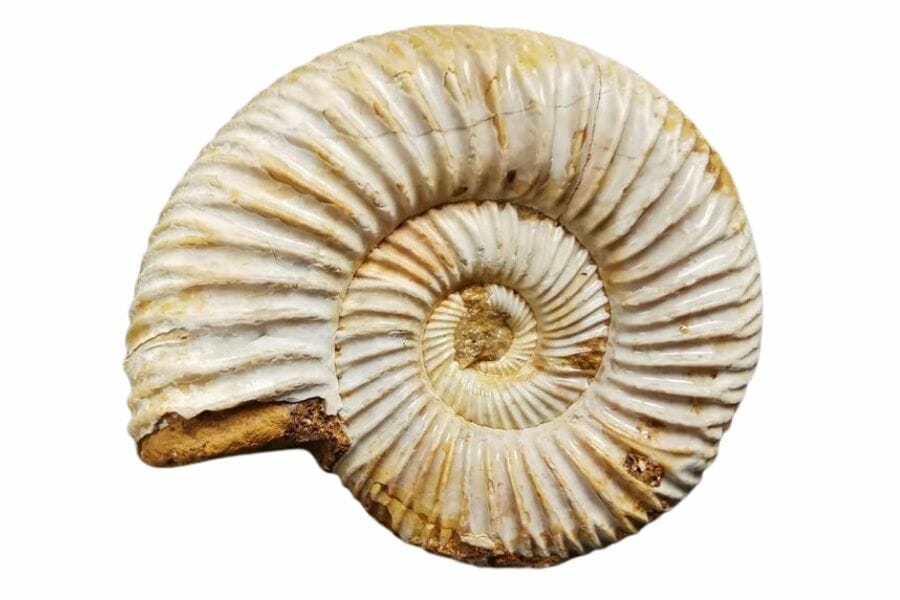Every corner of Maryland has unique geological features that hint at the life that once thrived there. Among these are Maryland fossils that can both excite collectors and teach us more about the world millions of years ago.
From the sandy shores of the Chesapeake Bay to the rocky terrains of the western region, there’s a diverse range of locations to explore. Every fossil found is a piece that helps complete the picture of Maryland’s distant past.
We’ll dive deep into these exciting locations and more, showing you where there’s a good chance you’ll find fossils. Whether you’re a seasoned fossil hunter or just starting out, there’s always something new to learn and find in Maryland.
The Fossils Of Maryland You Can Find
From plants to animals, each fossil tells its own story about the environment of its time. Shark teeth, in particular, are one of the popular fossils you might come across in this state.
Alongside these, other marine creatures like corals and snails have also been found.
If you’re interested in more than just fossils, you might want to check out our guide to find rocks and minerals in Maryland. It’s a handy tool for any explorer hoping to discover the state’s geological wonders!
- The extensive local experience and understanding of our team
- Input from multiple local fossil hunters and fossil groups
- The accessibility of the various locations
- Safety and potential hazards when collecting
- Private and public locations
- A desire to include locations for both experienced fossil lovers and those who are just starting out
Using these weights we think we’ve put together the best list out there for those who love finding great new fossils for our collections!
Common Maryland Fossils
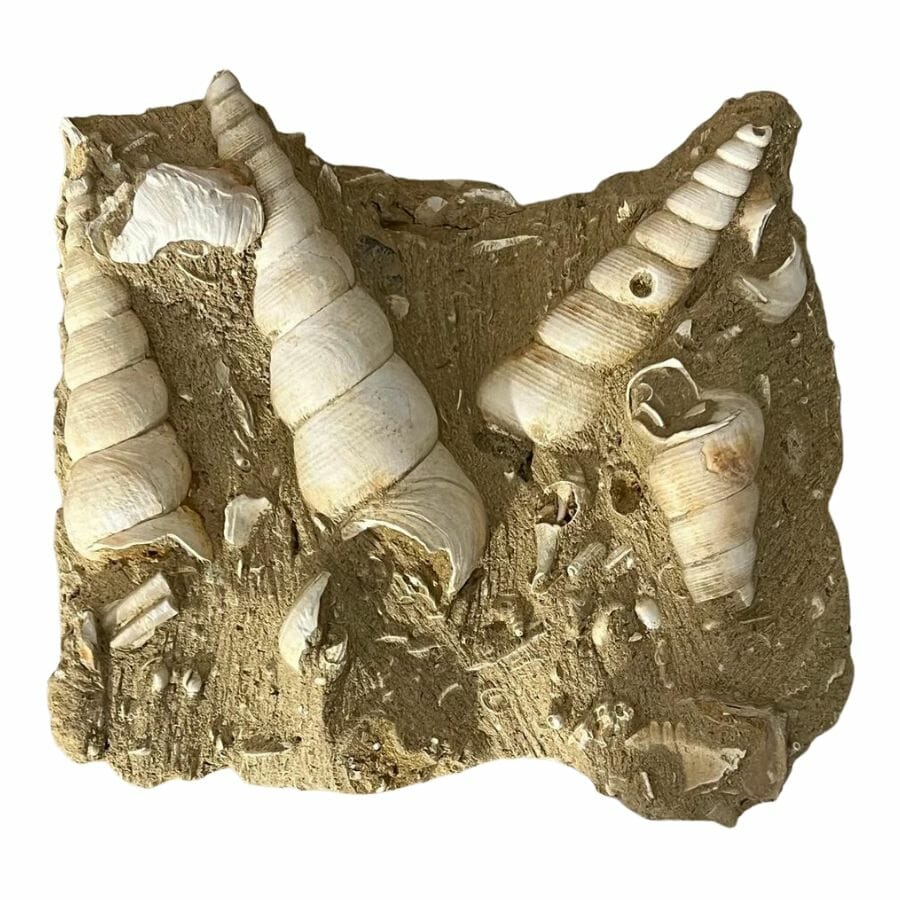
From sea creatures to plants, here are some common fossils of Maryland that you might encounter:
- Brachiopods
- Mollusks
- Crinoids
- Plant fossils
- Ammonites
- Gastropods
- Bivalves
- Pelecypods
- Shark teeth
- Corals
Maryland State Fossil – Ecphora gardnerae gardnerae (Wilson)
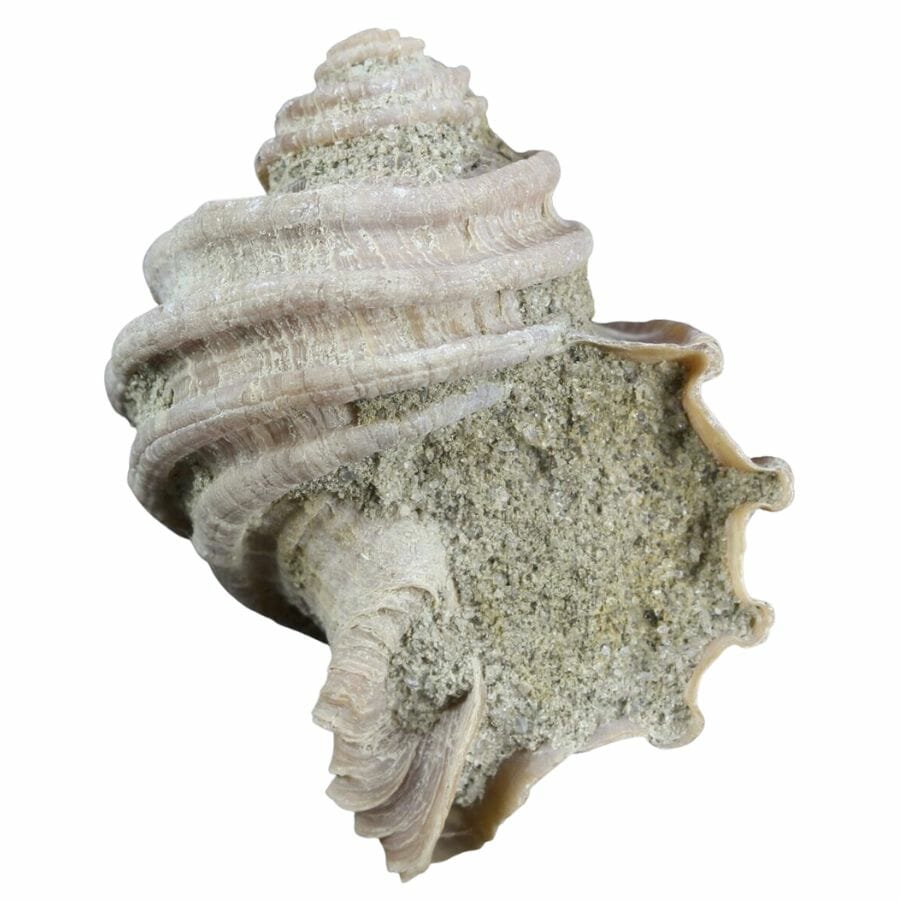
Ecphora gardnerae gardnerae (Wilson) is a special kind of fossil snail. It’s known for its bright orange-brown colored shell that’s spiral-shaped.
These snails once lived in the shallow seas that covered parts of what we now call the eastern United States. When alive, they crawled on the sea floor looking for food.
Today, their fossilized shells are a joy for fossil enthusiasts to find, and they’re especially significant because they’re the state fossil of Maryland!
Rare Maryland Fossils
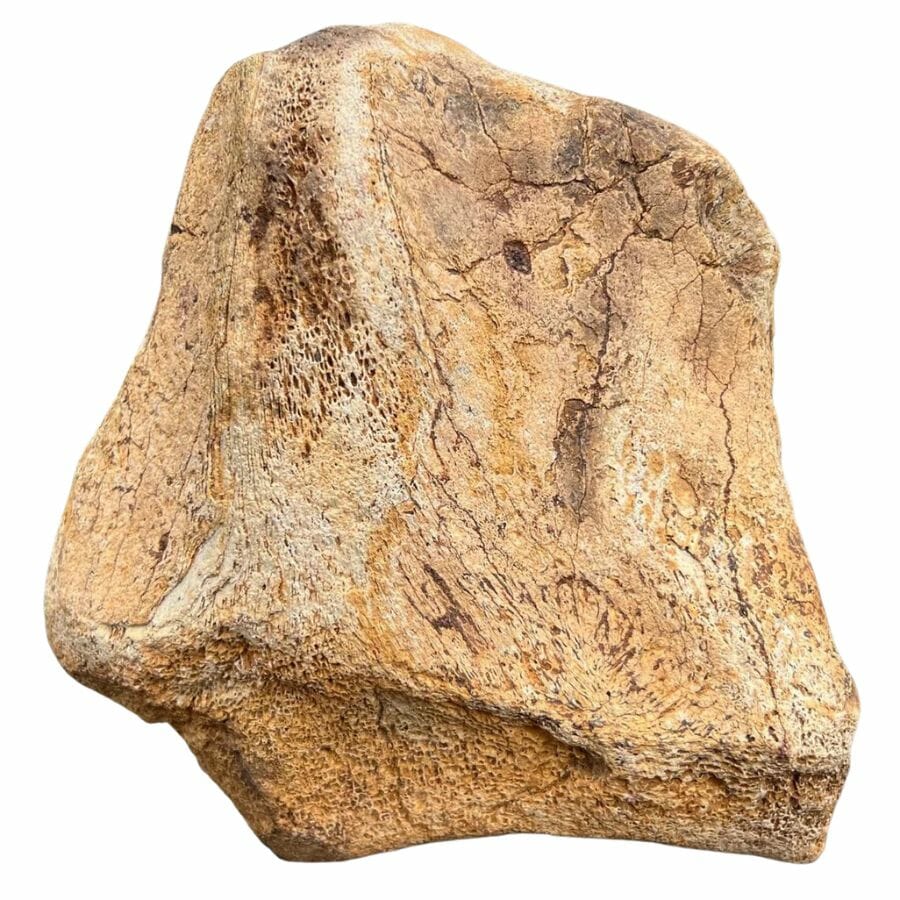
The valuable rare Maryland fossils stand out among the fossils in the state. These are a bit harder to come by, but for the passionate enthusiast, finding one is like striking gold!
- Megalodon teeth
- Dinosaur bones
- Dinosaur tracks
- Mastodon teeth
- Mammoth teeth
The Best Places To Find Fossils In Maryland
Maryland is packed with spots where fossils have been waiting for someone like you to discover them! These special locations have preserved stories of life from long ago.
Let’s dive into some of the best places to start your fossil-hunting adventure in this state!
Always Confirm Access and Collection Rules!
Before heading out to any of the locations on our list you need to confirm access requirements and collection rules for both public and private locations directly with the location. We haven’t personally verified every location and the access requirements and collection rules often change without notice.
Many of the locations we mention will not allow collecting but are still great places for those who love to find beautiful rocks and minerals in the wild without keeping them. We also can’t guarantee you will find anything in these locations since they are constantly changing.
Always get updated information directly from the source ahead of time to ensure responsible rockhounding. If you want even more current options it’s always a good idea to contact local rock and mineral clubs and groups
Calvert Cliffs State Park
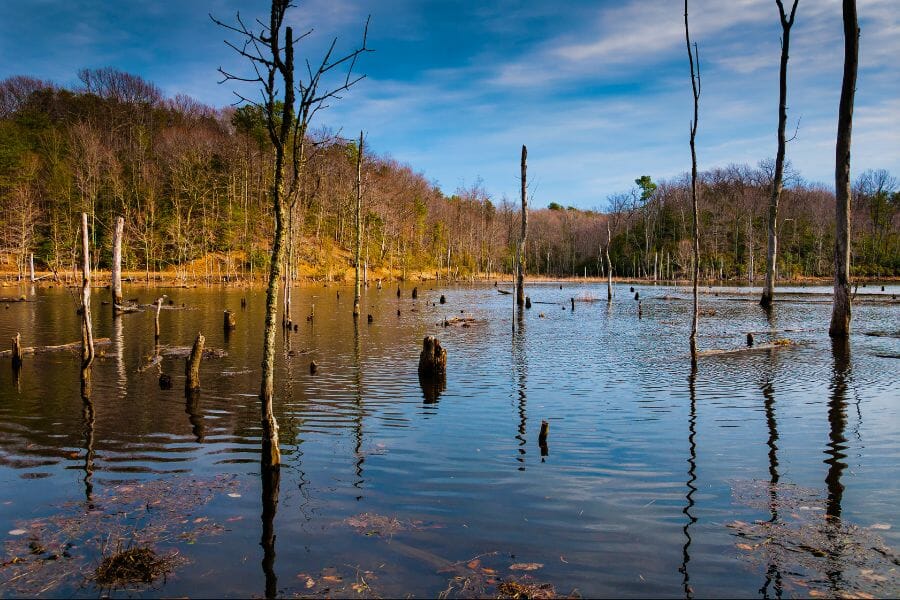
Calvert Cliffs State Park spans a vast area. The park showcases massive cliffs that rise above the Chesapeake Bay. These cliffs are made up of sediment from millions of years ago, making them a prime spot for finding fossils in Maryland.
The layers of sediment in the cliffs tell stories of a time when the area was submerged underwater, which is why many of the fossils found here are from marine animals.
The terrain at the park is diverse. Apart from the majestic cliffs, there are sandy beaches, dense forests, and freshwater ponds. It’s a haven for hikers and nature enthusiasts, offering over 13 miles of scenic hiking trails.
If you’re planning to visit, it’s easily accessible by car and has well-maintained facilities, including a large parking area.
For geology buffs, the combination of unique geology, picturesque views, and the thrill of discovering hidden fossils make Calvert Cliffs State Park a must-visit destination.
Where to find fossils in Calvert Cliffs State Park
The towering cliffs along the Chesapeake Bay hold a variety of marine fossils. Many visitors uncover shark teeth, which range in size from tiny specks to larger, more impressive specimens.
Additionally, remnants of whales, rays, and various shells often emerge from the layers of sediment. To find these treasures, enthusiasts usually search along the beach where erosion reveals new finds, especially after storms or high tides.
DON'T MISS OUT ON ANY GREAT FINDS!
While you're out searching for Fossils you're going to find A LOT of other interesting rocks and minerals along the way. The last thing you want to do is toss out something really interesting or valuable. It can be easy to misidentify things without a little guidance.
We've put together a fantastic field guide that makes identifying 140 of the most interesting and valuable rocks and minerals you will find REALLY EASY. It's simple to use, really durable, and will allow you to identify just about any rock and mineral you come across. Make sure you bring it along on your hunt!
Purse State Park
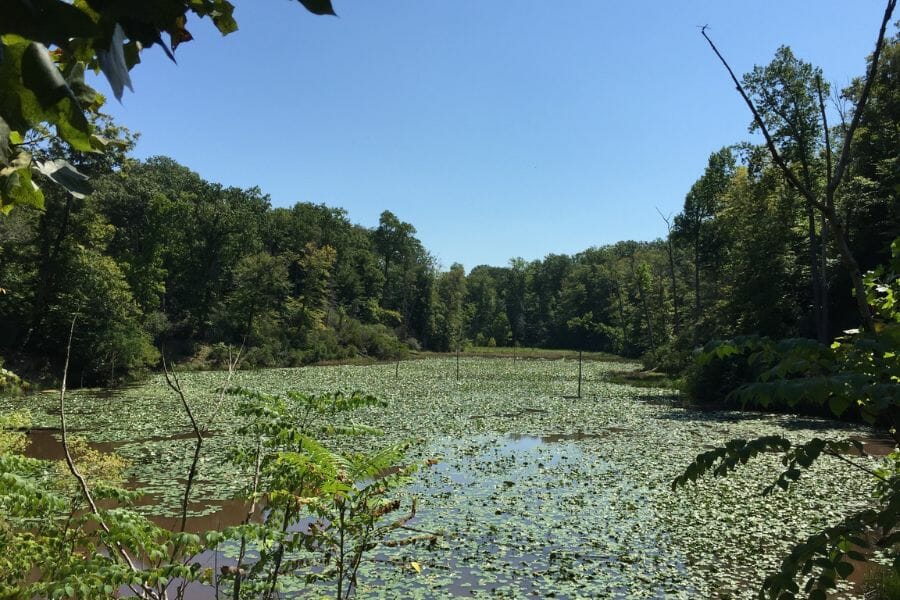
Tucked beside the Potomac River, Purse State Park offers a serene shoreline that’s especially known for its geologic wonders. The terrain here is mostly sandy beaches, with patches of wooded areas further from the water.
Within the sandy stretches, you can find a range of common Maryland fossils. The sedimentary layers deposited over the years have trapped and preserved remnants of life from long ago, making it an exciting spot for rockhounds.
Shark teeth are among the most sought-after finds in this area, and after a good rain or during low tide, new treasures are often revealed.
Purse State Park is accessible by car, with parking areas available for visitors. The trails leading to the fossil-rich sections are clear and manageable, ensuring a fun day of exploration for everyone.
Where to find fossils in Purse State Park
The shoreline along the Potomac River reveals a variety of marine fossils, especially after rain or during low tide. Shark teeth are one of the most common discoveries, but enthusiasts also often spot fossils of rays and other aquatic creatures.
The Purse Area in Nanjemoy Wildlife Management Area, adjacent to the park, offers similar fossil-hunting opportunities. Searching the sandy stretches and water-washed banks in both areas will increase the chances of uncovering these geological treasures.
Flag Ponds Nature Park
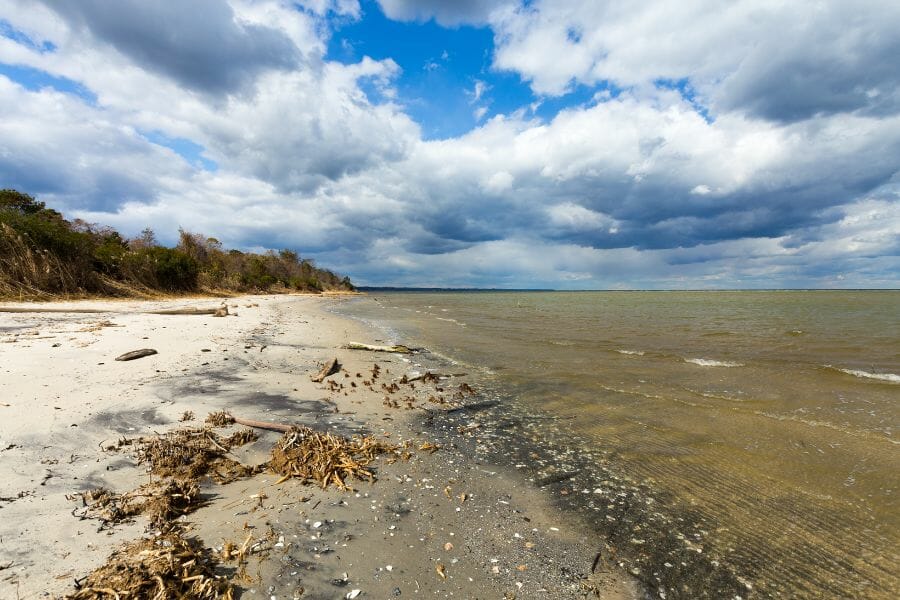
Located along the coast, Flag Ponds Nature Park boasts beautiful sandy beaches with the backdrop of wooded areas, making it a diverse spot for exploration.
The sandy shores of the park are known for their geologic wonders, making it a popular place for fossil hunting in Maryland. Over time, the waves and erosion have exposed layers of sediment, unveiling fossils from marine life of the past.
Shark teeth are one of the standout finds, and after a good rainfall or during low tide, it’s the perfect time to spot these and other treasures.
The park is accessible and easy to get to, with clear pathways leading to the fossil-rich areas. Parking is ample, and there are facilities and trails for those looking to spend a day in nature.
Where to find fossils in Flag Ponds Nature Park
The sandy beaches along the shoreline are a hotspot for uncovering marine fossils. Many visitors often find shark teeth of various sizes embedded in the sand or washed ashore.
Additionally, fossils of rays and other sea creatures are not uncommon. To increase chances of discovery, it’s best to search after a rainfall or during low tide when new layers of sediment are exposed.
Bayfront Park
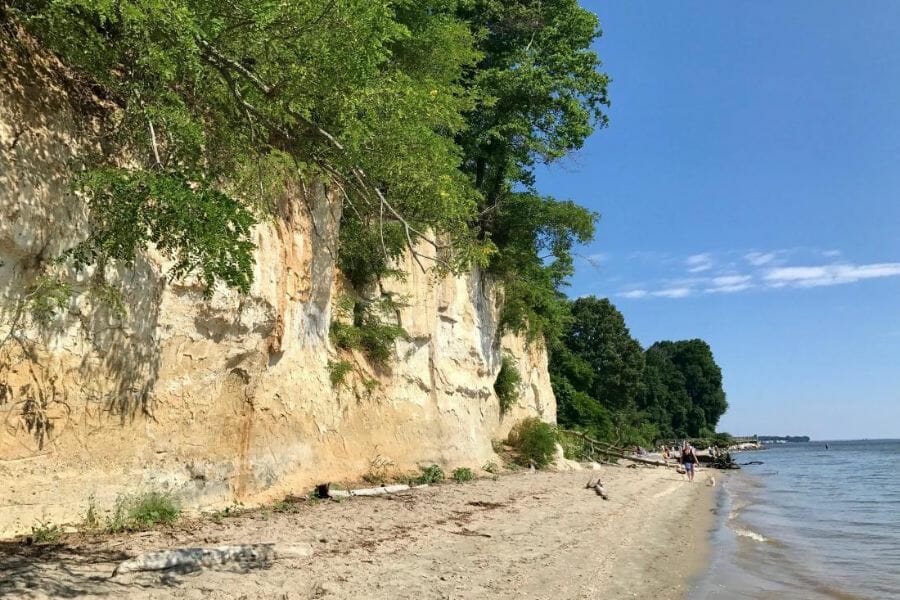
Bayfront Park, often known as Brownie’s Beach, features a serene sandy shoreline that stretches out, offering picturesque views of the water and horizon.
The beach, while perfect for relaxation, is also a haven for geology enthusiasts. Layers of sediment, revealed by the gentle action of waves and time, have captured and preserved remnants of marine life from long ago.
Many visitors enjoy combing the sands, hoping to discover hidden treasures like shark teeth and other marine fossils. The park’s terrain is mainly sandy beach with a few patches of grassy areas, making it easy to navigate.
Bayfront Park is easy to get to and has ample parking available. For those keen on spending a day exploring nature or just soaking in the sun, Bayfront Park is a delightful destination.
Where to find fossils in Bayfront Park
At Bayfront Park, the sandy beaches are a prime spot for discovering marine fossils. Many enthusiasts often uncover shark teeth embedded in the sand or washed up by the waves.
To spot these fossils, it’s a good idea to search the shores during low tide or after a rainstorm when the sands are freshly shifted.
Matoaka Beach Cabins
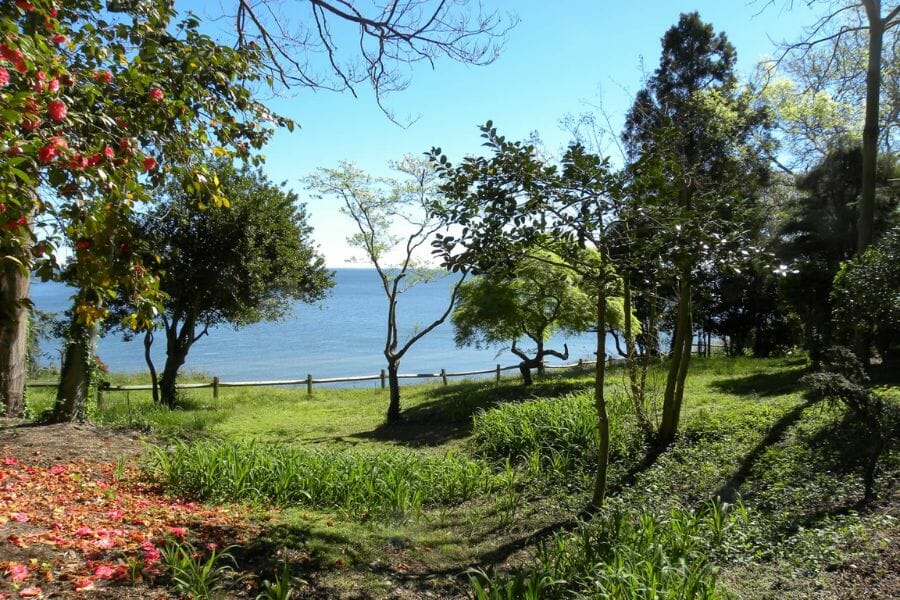
Matoaka Beach Cabins is a charming location nestled along the coastline. It boasts a sandy shoreline complemented by patches of dense vegetation and wooden areas.
The beachfront, while inviting for sunbathers and nature lovers, is also significant for its geological offerings.
Over the years, erosion has exposed layers of sediment, making this place one of the notable spots to find fossils in Maryland.
Shark teeth and other marine life fossils often emerge from the sands. The terrain is mainly sandy beach, dotted with a few rockier sections, providing varied exploration areas.
There are clear directions to Matoaka Beach Cabins, and the road leading up to it is well-maintained, making the journey smooth. With cabins available, it’s not just a place for day trips but also offers a cozy retreat for longer stays.
Where to find fossils in Matoaka Beach Cabins
Matoaka Beach Cabins boasts a sandy coastline rich in marine fossils. Visitors often uncover shark teeth, especially after storms or during low tide when the waves expose new sections of the beach.
For the best chances of discovery, exploring the areas where the sand meets softer sediment layers can be fruitful.
Other Top Places To Find Maryland Fossils By Region
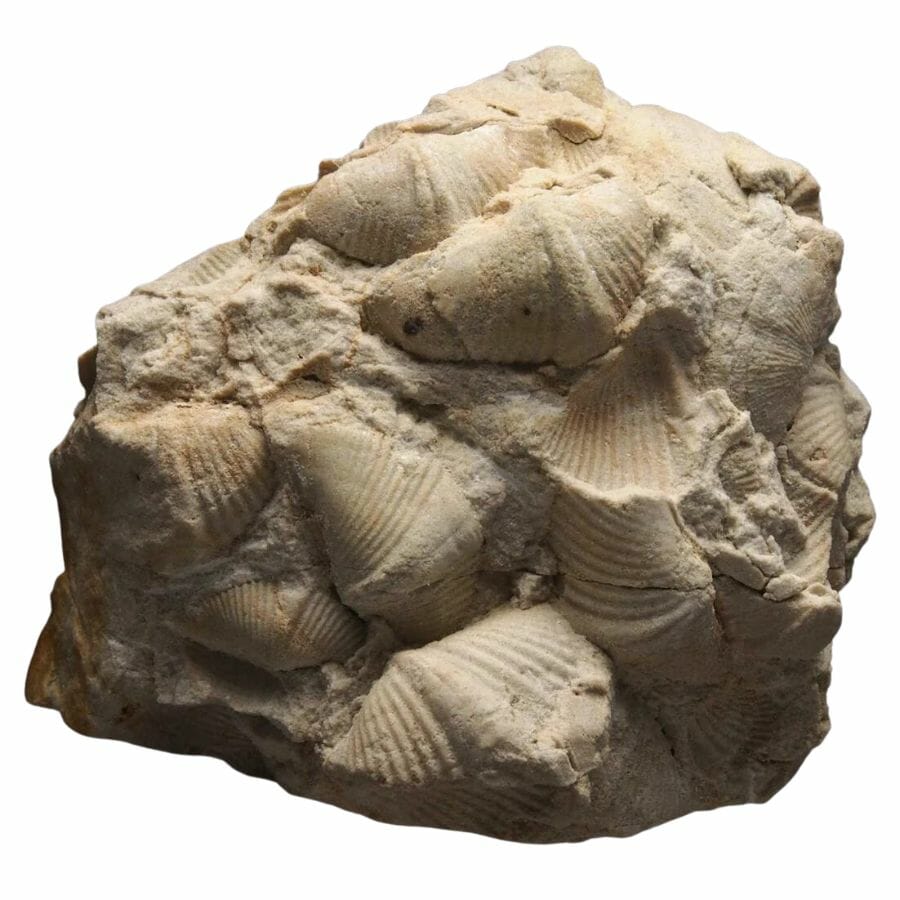
From sandy beaches to rocky terrains, there are numerous spots scattered across the state brimming with fossils. Each location offers a unique peek into different eras and ecosystems.
Here is a list of these fantastic fossil-finding areas in Maryland!
| Location | Fossils |
| Cumberland, Allegany County | Stereolasma, Amplexus, Cystiphyllum, Rhopalonaria, Linguella, Lingula, Craniella, Stropheodonta, Chonetes, Rhipidomella, Leiorhynchus, Spirifer, Ambocoelia, Pholidops, Schuchertella, Camarotoechia, Spirifer, Ostracods, Tropidoleptus, Paleoneilo, Rensselaeria, Costispirifer, Platyceras |
| Cumberland Cave, Allegany County | Mammal bones |
| Gilpin, Allegany County | Chonetes, Spirifer, Nucula, Pterinea, Nassa, Pleurotomaria, Cyclonema, Homalonotus |
| Queen City, Allegany County | Lingula, Stropheodonta, Schuchertella, Chonetes, Productella, Spirifer, Nucula, Aviculopecten, Bellerophon |
| Wills Creek, Allegany County | Stromatopora beds |
| Arlington, Anne Arundel | Bythinia, Vivaparus, Cyrena |
| Ft Foote, Anne Arundel | Auricaria, Araucarites cones and scales |
| Jessup, Anne Arundel | Dinosaur bones and footprints |
| Baltimore, Baltimore County | Cycads |
| Schoolhouse Hill, Baltimore County | Silicified Cycadeoida, dinosaur bones and footprints |
| Breezy Point, Calvert County | Shark teeth |
| Calvert Cliffs, Calvert County | Carcharias, Oliva, Ecphora, Fulgur, Surcula, Columbella, Turritella, Mangilia, Mactra, Arca, Isocardia, Spisula, Asaphis, Chione, Pecten, Venericardia, Scutella, Astrangia, Ecphora, Turritella, Panopea, Corbula, Metis, Macrocallista, Venus, Dosinia, Cardium, Crassatellites, Astarte, Pecten, Melina |
| Chesapeake Beach, Calvert County | Sharks teeth, mammal bones |
| Plum Point, Calvert County | Pelecypod Corbula, shark teeth, ray teeth, crocodile teeth, cetacean remains, mammal remains, shells |
| Randle Cliff, Calvert County | Shark teeth, ray teeth, crocodile teeth, cetacean remains, mammal remains, shells |
| Scientist Cliffs, Calvert County | Arthropods, Balanus |
| Solomons, Calvert County | Echinoderms |
| St. Leonard, Calvert County | Shark teeth, vertebrates, shells |
| Chesapeake and Delaware Canal, Cecil County | Ammonites, gastropods, bivalves |
| Lower Bohemia Creek, Cecil County | Exogyra, Gryphaea, Idonearca, Cardium |
| Clifton Beach, Charles County | Trionyx, Turritella, Meretrix, Thecachampsa, Euclastes, Xiphias |
| Cove Point, Charles County | Marine vertebrates, fossil leaves |
| Hughesville, Charles County | Venus, Turritella, Astarte, Cytherea, Ecphora, Crassatellites, Chione, Pecten |
| La Plata, Charles County | Lucina, Meretrix, Corbula, Venericardia, Crassatellites, Ostrea |
| Liverpool, Charles County | Meretrix, Ostrea, shark teeth, crocodile teeth, Dosiniopsis, Crassatellites, Turritella, Venericardia |
| Mason Springs, Charles County | Turritella, Crassatellites, Ostrea |
| Nanjemoy, Charles County | Crocodile teeth, shark teeth, gastropods, bivalves |
| Potomac River, Charles County | Corbula, Venericardia, Crassatellites, Ostrea |
| Emmitsburg, Frederick County | Dinosaur tracks |
| Frederick, Frederick County | Strophomena, Reteocrinus, Acidaspis, Cameroceras, Isotelus, brachiopods, bivalves, crinoids |
| Georgetown, Kent County | Dosiniopsis, Venericardia, Terebratula, Cucullaea |
| Melitota-Fairlee, Kent County | Cucullaea, Cardium, Exogyra, Gryphaea, Belemnitella |
| Worton Bay Shore, Kent County | Plant fossils |
| Bladensburg, Prince Georges County | Dinosaur bones and footprints |
| Bowie, Prince Georges County | Shark teeth, ray teeth, mosasaurs, plesiosaurs, corals |
| Branchville, Prince Georges County | Goniopholis |
| Contee, Prince Georges County | Priconodon |
| Fort Washington, Prince Georges County | Cyprimeria, Crassatella, Cucullaea |
| Muirkirk, Prince Georges County | Allosaurus, Coelurus, Astrodon |
| Cedar Point, St Mary’s County | Ostrea, Arca, Venus, Mya, Barnea, Crepidula, Polynices, Fulgur |
| Drum Cliff, St Mary’s County | Balanus, Panope, Phacoides, Cardium, Pecten, Ostrea |
| St Mary’s City, St Mary’s County | Miocene invertebrates, Pleistocene vertebrates |
| Wailes Bluff, St Mary’s County | Ilynassa, Eupleura, Polynices, Fulgur, Corbula, Tagelus, Rangia, Arca, Mya, Barnea, Ostrea, mastodon teeth, mammoth teeth |
| Cacapon Mountain, Washington County | Reticularia, Leptaena, Stropheodonta, Whitfieldia. |
| Eakles Mills, Washington County | Obolella |
| Hagerstown, Washington County | Cryptozoon, Tetradium, bat teeth |
| Hancock, Washington County | Dalmanites, Homalonotus, Pholidops, Rhipidomella, Stropheodonta, Camarotoechia, Atrypa, Spirifer, Trematospira, Pterinea, Bucanella, Tentaculites, brachiopods, crinoids, trilobites |
| Keyser, Washington County | Pholidops, Dalmanella, Goniophora, Panenka, Agoniates, Phacops |
| Parkhead, Washington County | Tropidoleptus, Camarotoechia, Spirifer, Rhipidomella |
| Rickard Mountain, Washington County | Merocrinus, Bythopora |
| Tonoloway Ridge, Washington County | Hindella, Rhynchospira, Stenoscisma, Camarotoechia, Spirifer, Schuchertella, Hormotoma |
| Williamsburg, Washington County | Corynoides, Climacograptus |
Common Questions About Fossil Hunting In Maryland
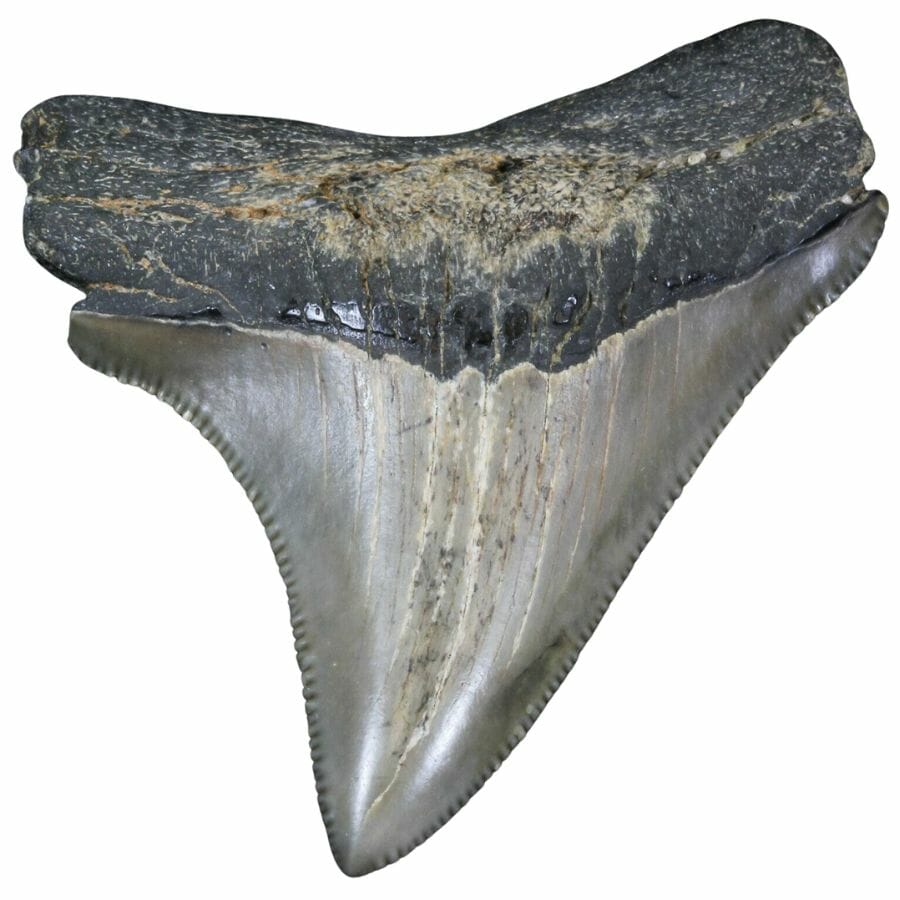
Here are the answers to some of the most common questions folks have about Maryland’s fossil wonders.
Can you find megalodon teeth or shark teeth in Maryland?
Maryland is a great spot for discovering shark teeth, including those of the megalodon. Among the many fossils of Maryland, megalodon teeth stand out because of their impressive size and the awe they inspire.
These giant teeth can be found at several locations, like the famous Calvert Cliffs.
The megalodon was a massive shark, and its teeth are a testament to its size and power. They can be several inches long!
Other types of shark teeth can also be found, representing various species that once swam in the waters that covered the area.
Is it illegal to collect fossils in Maryland?
In Maryland, fossil collecting rules can vary depending on where you are. On state-owned lands like state parks, it’s typically not allowed to remove any natural objects, including fossils.
This is to protect and preserve these special places for everyone to enjoy.
Make sure that you contact the Maryland Geological Survey to get more information on fossil hunting guidelines in the state.
However, there are designated areas where fossil hunting is permitted, and you can take home your finds. Calvert Cliffs State Park, for example, allows visitors to collect small amounts of fossils for personal use.
But it’s always essential to check the specific rules of the area you’re visiting. On private lands, you need the landowner’s permission to hunt for fossils.
Being respectful and responsible while fossil hunting ensures that these treasures can be enjoyed by many future generations. Always research and familiarize yourself with local regulations before setting out on your adventure.
Can you find dinosaur bones in Maryland?
Yes, you can find dinosaur bones in Maryland! While Maryland might be more famous for its marine fossils, some spots hint at the presence of dinosaurs long ago.
The best places to look are in the streambeds and cliffs of Prince George’s County. Over the years, folks have uncovered various dinosaur remains, including Astrodon johnstoni, which is Maryland’s state dinosaur.
How do you identify the fossils that you find?
First, note the shape and size. If it looks like a shell, plant, or bone, that’s your first clue. Next, consider the rock type you found it in. Different rocks can hold different fossils. For example, limestone often contains sea creatures like clams or corals.
Using a guidebook with pictures can be super helpful. These books show various fossils and give information about them.
If you’re still unsure, take a clear photo and share it with a local rock and fossil club. Many members are experienced and can give you insights.
The more you practice, the better you’ll get at recognizing different fossils.
Our Favorite Places To Buy Fossils In Maryland

If you’re looking to buy fossils, there are several reputable spots where you can find unique and fascinating fossils. Here’s a list of the top places to get these awesome pieces of history!
- Earthly Elements – 33 N Market St, Frederick, MD 21701
- Mahalo Minerals – 8300 Eastridge Ave, Takoma Park, MD 20912
- GTC Rock Shop – 5500 Buckeystown Pike, Frederick, MD 21703
- Caldron Crafts – 6611 Baltimore National Pike, Catonsville, MD 21228
- Gypsytique – Park Place, 5015 St Leonard Rd Unit 3, St Leonard, MD 20685

